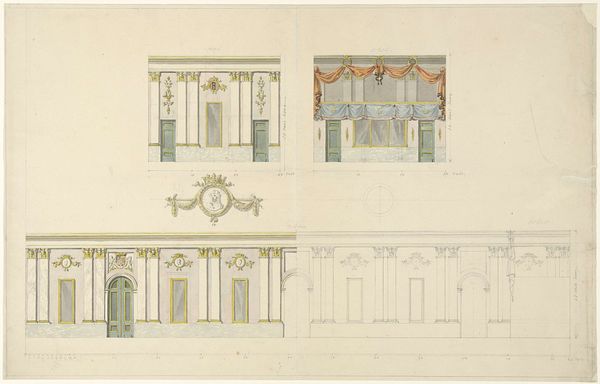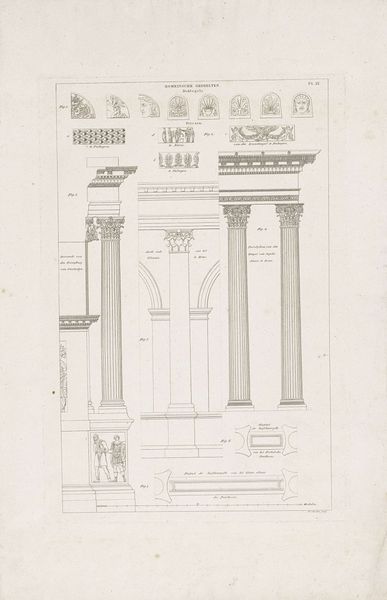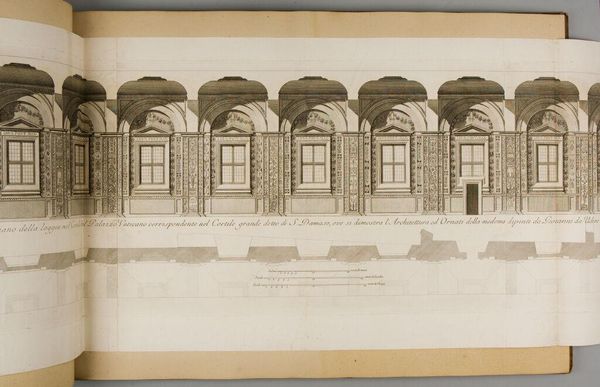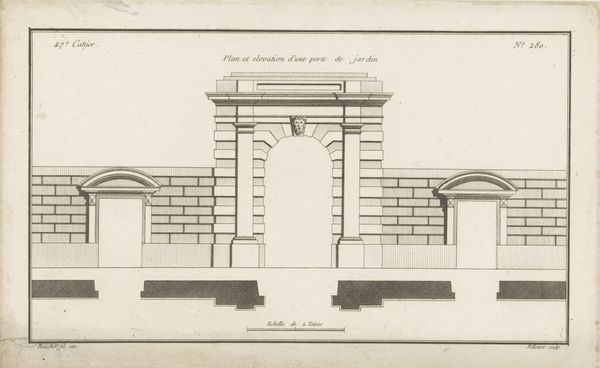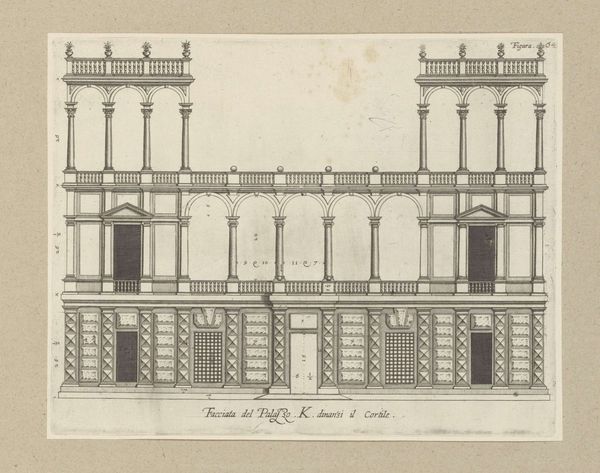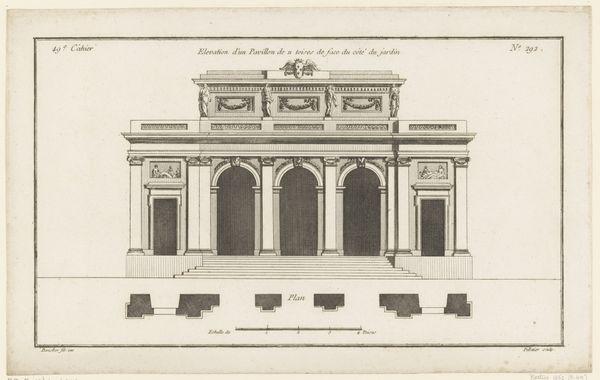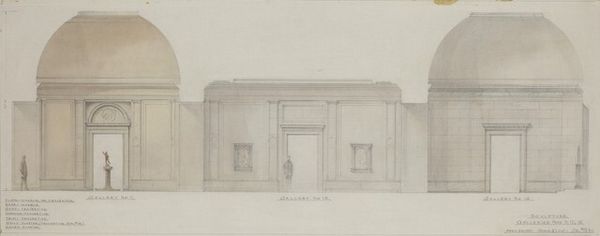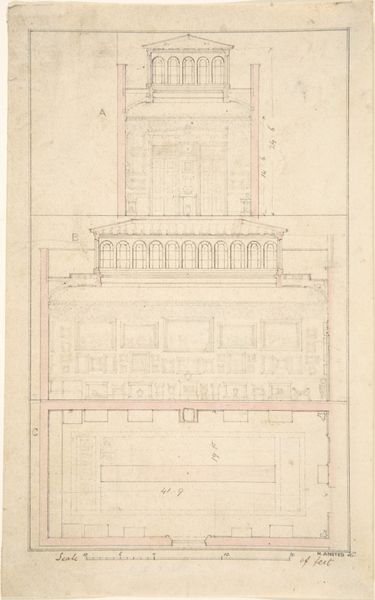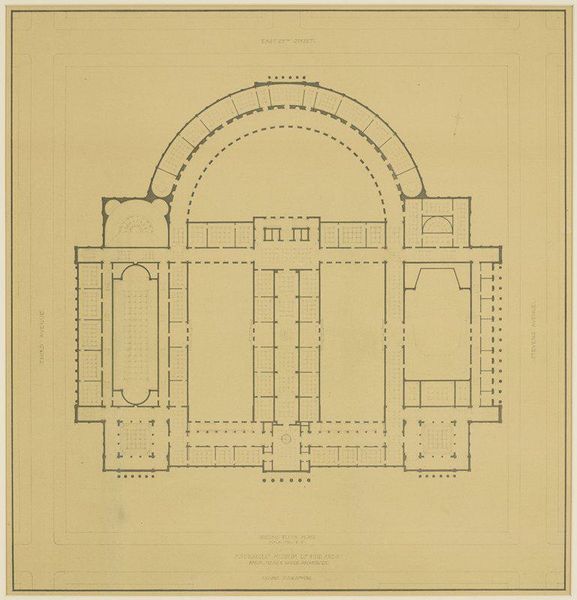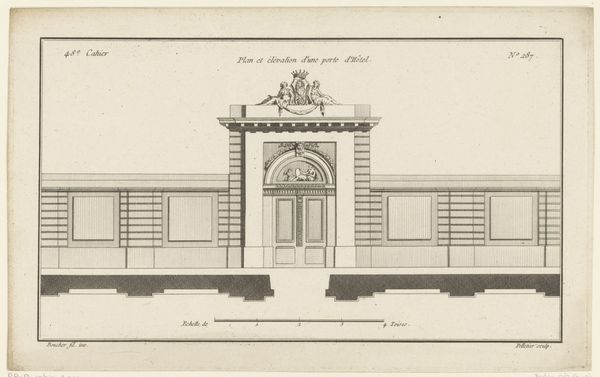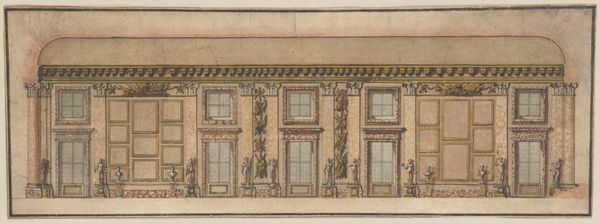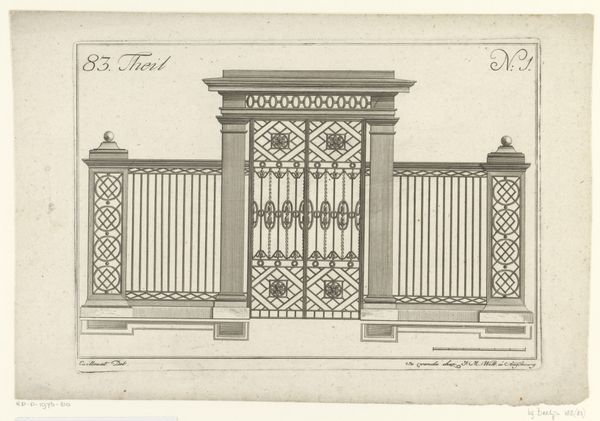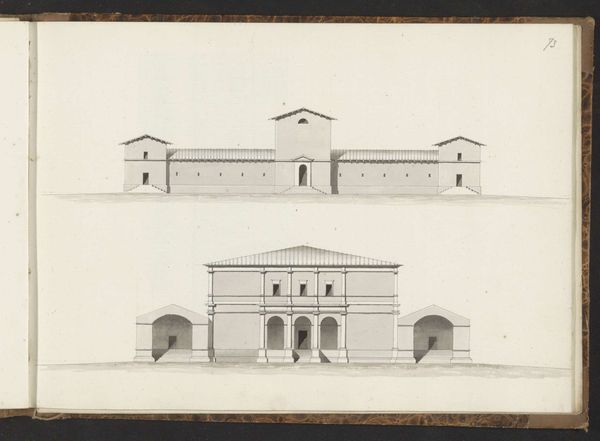
Het Nieuwe Beursgebouw, plegtig Ingewijd, in tegenwoordigheid van Z.M. Willem II, 10 September 1845 Possibly 1846
0:00
0:00
#
architectural sketch
#
historical design
#
aged paper
#
architectural plan
#
retro 'vintage design
#
historical photography
#
architectural section drawing
#
architectural drawing
#
architecture drawing
#
architectural proposal
Dimensions: height 369 mm, width 546 mm
Copyright: Rijks Museum: Open Domain
Curator: This intriguing work, likely dating to 1846, captures P.C. Zweesaardt's design for 'Het Nieuwe Beursgebouw,' or the New Stock Exchange, in Amsterdam. It commemorates its grand opening attended by King Willem II in September of 1845. Editor: It strikes me immediately as being both imposing and delicate. The precision of the architectural drawing gives it a formal, almost severe quality, while the aged paper adds a layer of fragility, a sense of looking back at something from a great distance. Curator: Absolutely. Zweesaardt’s image here speaks to the evolving role of the stock exchange in the Netherlands. Note the clear inscription: "BOEKOIR KRUNST" which literally means "Book-Keeping Art," emphasizing the importance and perceived sophistication of financial trade in Dutch society at the time. Editor: The classical columns, topped by what appears to be an almost Egyptian-revival entablature, speaks of a deliberate connection to historical precedents of power and commerce, I see also how Roman numerals prominently placed, underscore the historical weight the architect clearly hoped the building would convey. Curator: Precisely. It's a powerful statement about the Dutch monarchy's backing of capital investment, using the language of neoclassicism to legitimize burgeoning financial systems. The architectural plan gives a physical form to these complex economic and political relationships. The Stock Exchange becomes more than just a place of trade; it's a symbol of national pride and progress under Willem II's rule. Editor: Looking closer, the stars edging the steps are interesting too. Were those popular motifs at the time, representing a connection with broader symbolic concepts, like, say, order or even providence, associated with commerce? Or were they more of a decorative choice? Curator: Good eye! During the 19th century, certain social ideals did become interwoven with visual culture, as it does, as public commissions needed to reflect contemporary morals, trends and values. However, absent further visual cues and context, there's no reliable interpretation to offer. It is entirely possible, as you said, they were selected to simply ornament. Editor: This print provides us such a poignant look at not only architecture, but at how economic and monarchical strength used symbolism to declare presence. Curator: A fleeting yet commanding expression of both social values and high-minded intentions that is captured on paper.
Comments
No comments
Be the first to comment and join the conversation on the ultimate creative platform.
